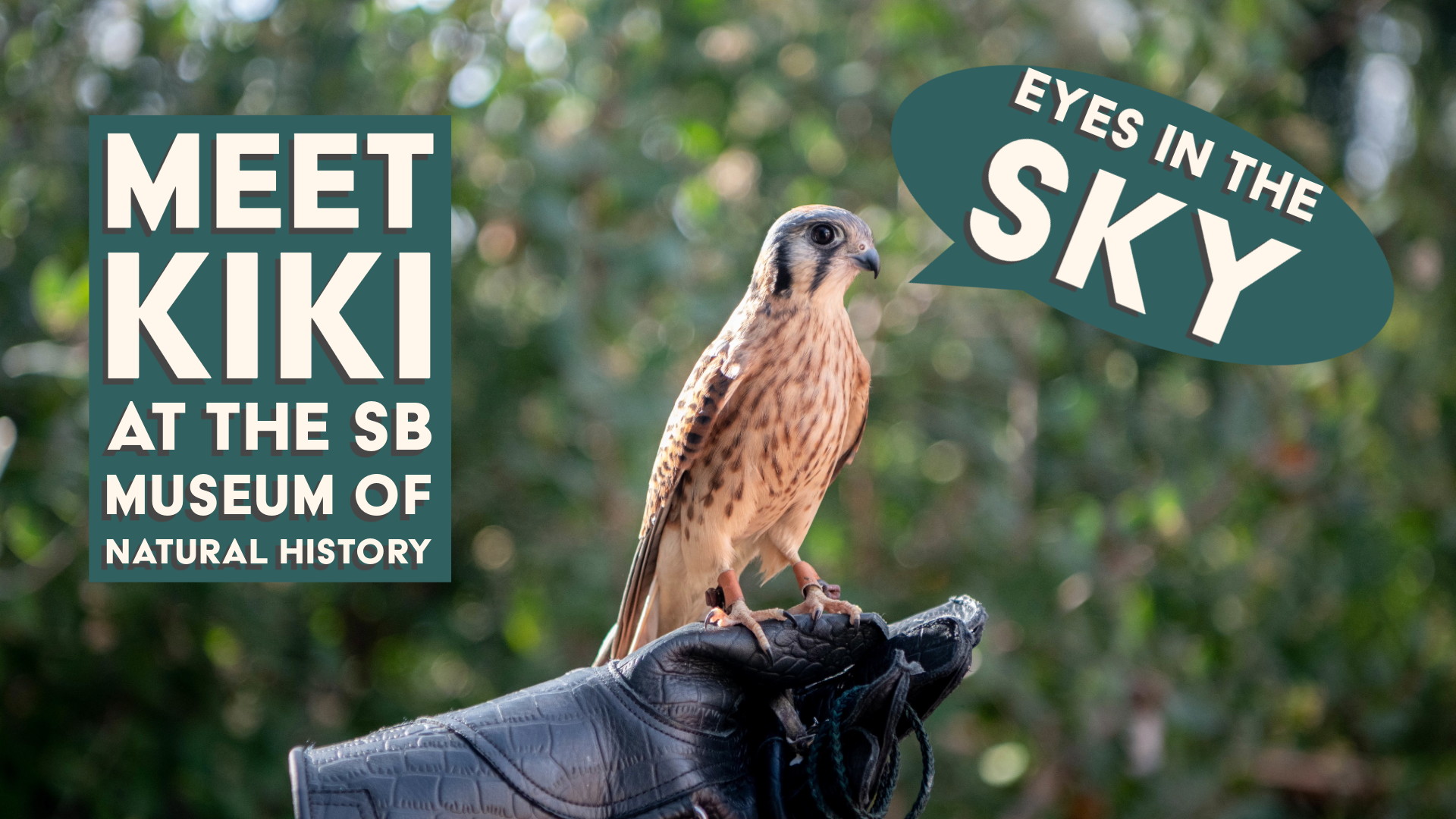
Wildlife Education for Santa Barbara
Since 2000, Eyes in the Sky (EITS) has been Santa Barbara Audubon Society’s key wildlife education program. It features live birds of prey trained to interact with the public as ambassador animals. Each of our birds was adopted from a licensed wildlife rescue center; they are considered non-releasable and would be unlikely to survive outside of human care.
Our birds are housed on the Santa Barbara Museum of Natural History campus. You can view the birds in their aviary during the Museum’s open hours: 10:00 AM to 5:00 PM daily. Santa Barbara Audubon Society volunteers are present to teach guests about the birds 2:00–4:00 PM on Thursdays, Fridays, Saturdays, and Sundays.
The EITS birds also travel off the Museum campus for private educational programs. The majority of our offsite programs take place in public elementary schools, after-school programs, and community centers. If you’d like to schedule a visit from the birds, please see the “Programs” tab above.
EITS was founded in 2000 by Gabriele Drozdowski, who retired as the program’s director in 2018. The program is now run by two part-time staff : an EITS Program Director and an EITS Raptor Caretaker and Outreach Assistant. Both are supported by a team of about 25 volunteer educators. To learn more about volunteering, please see below.
Times & Location
At the Museum of Natural History, the birds can be viewed in their aviary from 10:00 AM to 5:00 PM daily.
Santa Barbara Audubon Society volunteers are present to teach guests about the birds 2:00–4:00 PM Thursday–Sunday.
Address:
Audubon Aviary
Santa Barbara Museum of Natural History
2559 Puesta del Sol
Santa Barbara, CA 93105
Thank you for your support – in all its shapes and forms!

Want to Volunteer?
Eyes in the Sky volunteers are dedicated group of raptor caretakers and educators from all walks of life. They are the public face of Santa Barbara Audubon Society, engaging with audiences of all ages throughout the Santa Barbara area.
Volunteers care for the birds in our aviary, and they present to the public about our local raptor species. Our educational outreach presentations are typically informal and learner-directed, with a friendly and approachable atmosphere. We interact with audiences both on-site at the Santa Barbara Museum of Natural History and off-site at local schools, community centers, and retirement communities. We want to share our passion for these incredible birds!
There may be opportunities for new volunteers to handle a live bird on the glove, but most of our time is spent acting as interpreters and educators for the public. We ask all volunteers to dedicate at least one afternoon per week from 1:30 – 4:00 PM, and we ask for a commitment of at least one full year.
If you’re interested in joining us, please email email hidden; JavaScript is required with your contact information and any relevant experience in animal care, wildlife rehabilitation, or education. Thank you!
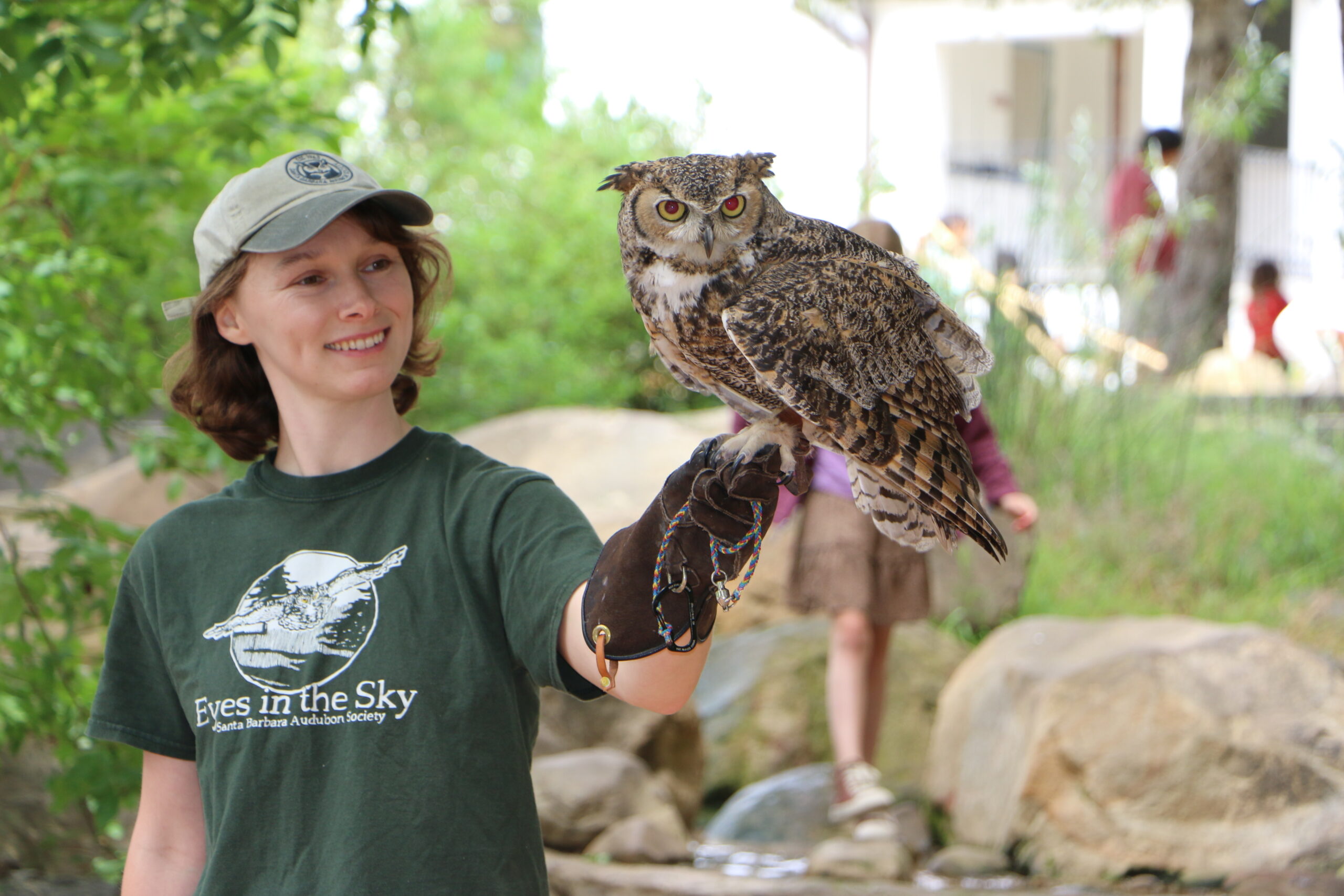

Max
Max is a Great Horned Owl (Bubo virginianus). Great Horned Owls are the largest owls found in North America. If you hear the hooting “hoo, hoo, hoo” of an owl at night, you are most likely hearing a Great Horned Owl.
When Max was a baby, he fell out of the nest. Unfortunately, he “imprinted” on his human rescuers: he does not understand the difference between humans and owls, and does not know how to care for himself in the wild. Imprinted raptors are considered non-releasable.
Despite this, Max has served as a dedicated foster parent for other orphaned owlets. Over his life, he has raised 76 young owlets for release back into the wild!
Max was born and adopted in 1998.
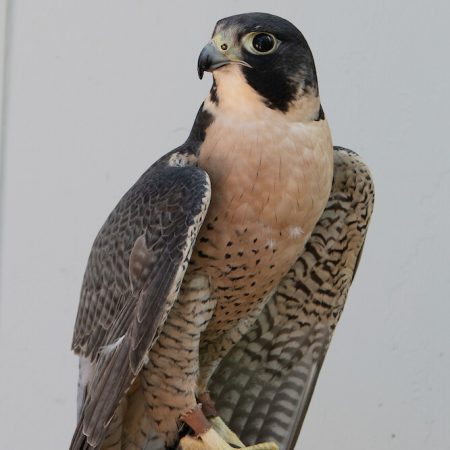
Ace
Ace is a Peregrine falcon (Falco peregrinus), the fastest animal on the planet! These falcons can dive at speeds greater than 200 mph to strike birds in midair.
Ace suffered a broken wing in the wild. The injury did not heal perfectly, which means he is unable to fly well enough to catch his prey in the wild. Because of this, he would struggle to survive.
Ace was adopted in 2023.
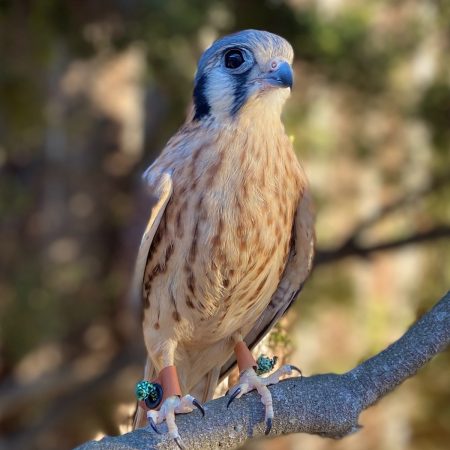
April 2024
Mouse
Mouse is an American kestrel (Falco sparverius), the smallest falcon in North America. If you see a bird hovering over a field – flapping its wings to stay perfectly in place – you may be seeing an American kestrel on the hunt.
Like Max, Mouse fell out of the nest as a baby and became imprinted on her human rescuers. As an “imprint,” she is drawn towards humans instead of her own species, and would not do well on the wild. She is a very vocal, expressive little bird!
Mouse was adopted in 2022.
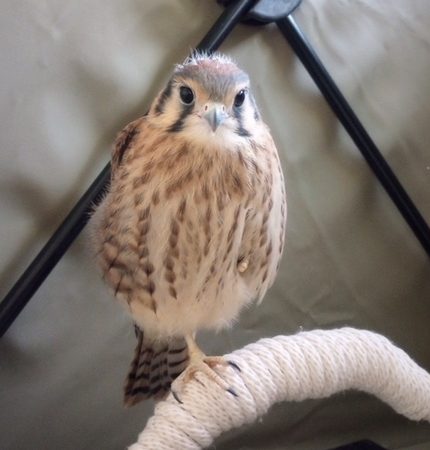
Kiki
Kiki is another American kestrel (Falco sparverius), the smallest falcon in North America. When Kiki was only two days old, her nest was destroyed. She was the only survivor. Rescued by humans, she quickly imprinted like Max and Mouse. She is our newest and youngest arrival!
Kiki was adopted in 2023.

Our program fees typically range from $200 – $350 per presentation.
To schedule a presentation, please contact
email hidden; JavaScript is required.
Please include:
- the name of your organization
- the dates or times you have in mind
- and the anticipated size and age of our audience
We are happy to present indoors or outdoors for any age. Digital visits via Zoom are available upon request. We look forward to seeing you soon!
Classroom presentations:
We are happy to bring bird specimens, replicas, and activities for a hands-on learning experience! For Preschool, Pre-K, and Kindergarten, we recommend a 15- to 30-minute presentation. For 1st, 2nd, and 3rd grade, we recommend a 30- to 45-minute block of time. For 4th grade and up, we recommend a 45- to 60-minute visit.
Presentations for adults and families:
For adult, elder, and mixed audiences, we can provide a 45- to 60-minute lecture that dives deep into information about our local ecosystems and birdlife. By default, we present without Powerpoint and do not need an audio/visual setup; if you’d like to plan for a technical component, please let us know!
Science Nights and other high-attendance events:
In this style of event, visitors flow freely through the venue and approach our presenters at their own pace. We will bring touchable raptor specimens, replicas, and activities! This style of presentation works well when you have multiple activities available at the same time.
Meet Your Wild Neighbor:
Eyes in the Sky provides a course series called Meet Your Wild Neighbor (MYWN) for local elementary school classrooms. This program features a 3-part series of hour-long sessions for each classroom. Each student receives a take-home packet of learning activities. MYWN curriculum is aligned with the Next Generation Science Standards (NGSS) for K – 3rd.
